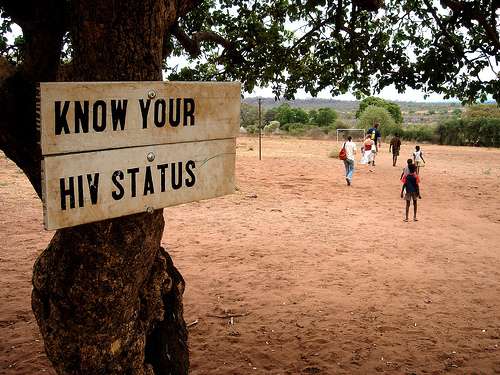So much has changed since the first HIV test was approved 30 years ago

Thirty years ago today, on March 2, 1985, the Food and Drug Administration approved a new HIV test. It was the result of nine months of round-the-clock labor by dozens of scientists. Immediately adopted by the American Red Cross and other institutions, the blood test marked the beginning of a new era in HIV medicine.
Life before the test
In the early 1980s, gay men and injection drug users in coastal cities in the United States were dying of unusual infections, and nobody knew why. Clinical rarities like Pneumocystis pneumonia, Toxoplasma encephalitis and Kaposi sarcoma became common entities in a short span of years.
Scientists scrambled for answers, doctors fought a protean array of oddball diagnoses, and activists tried to protect a largely marginalized population of patients from systematized neglect.
Patients with HIV, caught in the crossfire between high-minded science and low-brow politics, wondered what would come next, and almost universally discovered it wasn't good. Their partners and friends in turn wondered if they too would be hospitalized with a mysterious pneumonia or develop the stigmatizing purple skin spots of Kaposi sarcoma.
Finally, when the first HIV test came out in 1985, doctors and patients could know who was or was not infected. We could at least name our viral enemy. Famously, the AIDS activists Act Up proclaimed "Silence = Death," the converse of which was the radical concept that speaking up about the diagnosis of HIV restored some measure of power to the powerless. On the other hand, in those days a positive test result was sometimes seen as an identity-changing death sentence. As Susan Sontag wrote in AIDS and Its Metaphors, "Fear of sexuality is the new, disease-sponsored register of the universe of fear in which everyone now lives."
Technology has changed, but so have we
We have come so far since then. Over 70 million people have been diagnosed with HIV worldwide, and once-politicized HIV testing is becoming a routine governmental health recommendation. The US Preventive Services Task Force, for instance, recommends HIV testing for all US adolescents and adults. Worldwide HIV testing drives and shapes the allocation of dozens of billions of dollars of funding for HIV treatment and prevention programs.
HIV testing technology too has evolved with time. Despite sensitivity and specificity rates over 99%, early generation HIV tests still could remain falsely negative for months after initial infection. This meant newly infected patients went unconnected to lifesaving prevention and treatment opportunities and often did not know how important it was for them to alter risky behaviors that could transmit HIV?
Fortunately HIV tests have steadily gotten better through the years. The latest fourth generation tests can detect nearly all cases of HIV from the first few weeks of initial infection, and can do so in hours. As a result, in 2014 the CDC updated its testing guidelines recommended a new testing algorithm that uses fourth generation HIV tests.
The technology of HIV testing isn't the only thing that has evolved significantly in the last 30 years. The science of HIV treatment and prevention has evolved as well, in turn changing the way a positive HIV test is perceived.
Diagnosis now means treatment
Perhaps the most critical change has been the development of safe and effective HIV treatments. People with HIV who promptly access and take HIV therapy now live as long as people without HIV infection, and are at least a hundred times less likely to transmit HIV than they were off of therapy. These are major accomplishments for an infection unheard of 35 years ago.
It is never good news to learn you have HIV but at least now people with HIV have options. Beyond HIV treatment, another option is serosorting, in which people with a positive HIV test elect to have sex only with others with the same serostatus, thereby reducing the risk of transmission to people without HIV. This is yet another example of how HIV testing can empower people with HIV to help contain the epidemic.
Decades of public health messaging and activism have also changed the societal context of HIV testing. When the HIV epidemic was first recognized, public mention of homosexuality in particular was stigmatized, and governmental squeamishness with the issue is widely credited for exacerbating the early US AIDS epidemic. We are still a long way from providing optimal care to everyone who needs it, but every time I see patients with HIV in clinic I am reminded of the distance we have traveled. A married gay patient recently told me that, besides the few seconds it takes to swallow his nightly pill, "I completely forget I even have HIV."
In 2015, there is hope we will beat HIV. From a partially active vaccine to Timothy Ray Brown, the only person ever cured of HIV, many in the HIV field are newly starting to hope for an HIV cure for all. Until that day comes – and it will! – one of our best tools in the fight against AIDS is HIV testing, at 30 years and counting.
This story is published courtesy of The Conversation (under Creative Commons-Attribution/No derivatives).
![]()

















